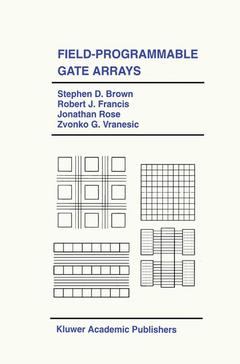Field-Programmable Gate Arrays, 1992 The Springer International Series in Engineering and Computer Science Series, Vol. 180
Auteurs : Brown Stephen D., Francis Robert J., Rose Jonathan, Vranesic Zvonko G.

Field-Programmable Gate Arrays discusses the most important aspects of FPGAs in a textbook manner. It provides the reader with a focused view of the key issues, using a consistent notation and style of presentation. It provides detailed descriptions of commercially available FPGAs and an in-depth treatment of the FPGA architecture and CAD issues that are the subjects of current research.
The material presented is of interest to a variety of readers, including those who are not familiar with FPGA technology, but wish to be introduced to it, as well as those who already have an understanding of FPGAs, but who are interested in learning about the research directions that are of current interest.
Date de parution : 09-2012
Ouvrage de 206 p.
15.5x23.5 cm
Disponible chez l'éditeur (délai d'approvisionnement : 15 jours).
Prix indicatif 210,99 €
Ajouter au panierThèmes de Field-Programmable Gate Arrays :
Mots-clés :
Computer-Aided Design (CAD); FPGA; Field Programmable Gate Array; Gate Array; VLSI; architecture; learning; logic; model



